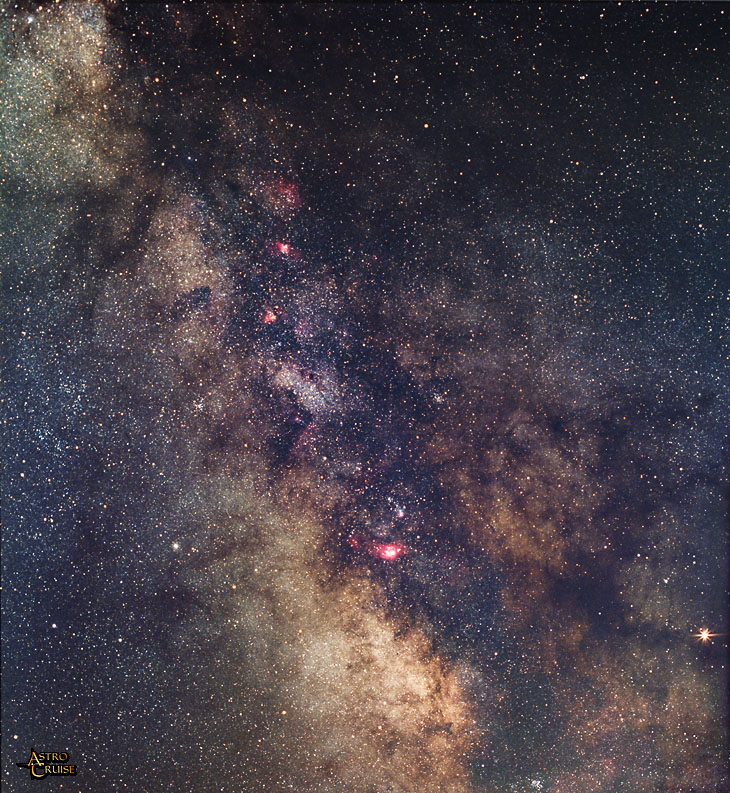
 |
Object Data: This wide-field image shows the richest part of our Milky Way galaxy, from the Scutum star clouds to the north down to the heart of the Milky Way (the centre of our galaxy) which is towards the base of this image, approximately in the centre of the dark dust lane. Interspersed within the dark dust lane are some of the richest star forming regions in our galaxy, characterised by red glow from ionized Hydrogen and Oxygen gases. Running northwards in sequence these are: M8 (Lagoon Nebula), M20 (Trifid Nebula - only just visible), M17 (Swan Nebula), and M16 (Eagle Nebula). There are many fainter ionized regions in this part of the Milky Way, some of which are visible in this image. The very bright "star" to the lower right of this image is Mars.
Date: 21/06/01
Location: Southern France
Conditions: warm, light wind, transparency=8, seeing=3
Optics: Pentax 105mm f/2 lens (working at f/4) on Pentax 6x7 body
Mount: AP 900 GTO on Portable Pier
Autoguiding: SBIG ST-4 tracking RCOS 12.5"
Camera: Pentax 6x7 piggybacked on RCOS 12.5"
Film: Hypersensitsed Kodak GPY 400 120 format
Filtration: None
Exposure: 3x15 minutesEnhancement: Three negatives were scanned at 2571dpi using a Sprintscan 45 Ultra, then digitally registered in Registar, then further enhanced in Photoshop.
Notes: I had set up the RCOS 12.5" in anticipation of taking some narrow field images of Milky Way regions. However seeing was very poor and while waiting for it to stabilise (it never did) I piggybacked the medium format camera on the RCOS to take some wide field images (which would be relatively unaffected by the seeing). Hence the bizarre use of the RCOS 12.5" as the guidescope!
The challenge of this photo is illustrated on the right, which shows the full frame of this image. This region of the Milky Way is at relatively low elevation from southern France (latitude nearly 45 N) and the lights from Marseille (40 miles to the south) can be seen encroaching strongly near the horizon. A very large amount of gradient and colour correction was required (the above crop extends as far south as the tree, just visible to the bottom right). This looks like a real challenge, however it was made possible using the procedure "Digitally Removing Uneven Field Illumination" by Jerry Lodriguss. I use this procedure consistently for all gradient correction and vignetting removal.
The summer Milky Way holds a special fascination for me because of its relative invisibility from the UK. On warm summer nights in southern France it is wonderful to see the tail of the Scorpion riding along the crest of the horizon - it is worth returning each summer just for that sight alone.
|
|
|
|